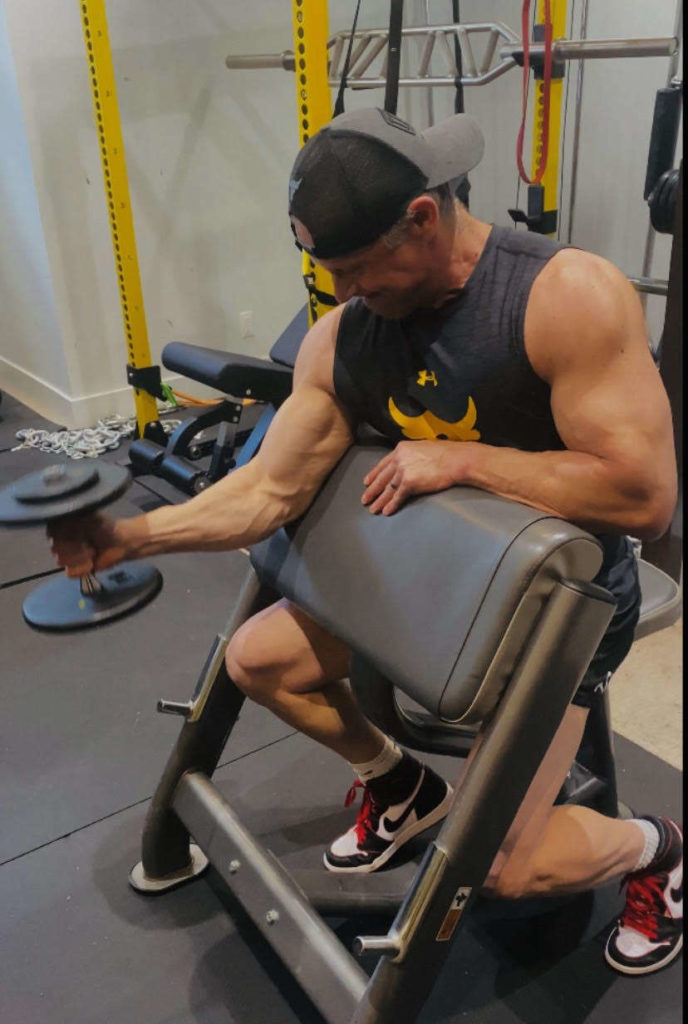There are many programming tweaks and tricks you can try to address a weak bodypart.
However, since genetic structure is such a key factor, much of the voodoo you read will achieve — for you — sub-par results at best.
As for things that DO appear to work? It can be hard to pinpoint what really happened: maybe you followed a really neat specialization routine but you also increased calories (finally) and you cranked up focus and effort. So what really deserves the praise? One of those things? All of them?
Still, people are constantly searching for the Magic Fix, that elusive exercise, sets/rep combination, or frequency model to finally get a stubborn muscle to grow.
But the number one thing you can do to “bring up” a weak body part is also the least sexy:
IMPROVE TECHNIQUE AND JACK UP FOCUS.
Improving your technique starts with proper setup.
Proper setup includes subtle things like NOT retracting your shoulder blades during chest presses or lateral raises. It includes the basic (but oft overlooked) stuff like proper stance width in lower body lifts, or a strong, supported set-up in a single-arm row.
Next, use a full BUT EFFECTIVE a range of motion. So, while a half-rep leg press is garbage — and we all like to make fun of “that guy” in the gym — a rep that goes so low you lose tension is not only less effective, it’s also an enormous risk to your lower back.
Finally, anyone who’s lifted for awhile will tell you there’s more to building muscle (and staying healthy) than just “picking up the weights and putting them down.”
Like so many things in life, how you do something is just as important as “what” you do. And, in bodybuilding, the “how” is MORE important than what, why, or when.
To put it another way, what I’m referring to is FOCUS.

An experienced, focused lifter can create more muscular tension and “get more” out of a set, especially as that set approaches failure. And even more important, they get more while doing fewer recovery-zapping sets. #GetMoreOutOfLess
To help clients wrap their brains around this and get them to experience it, I like to use the 10-SECOND RULE.
The 10-second rule is just a simply way to make sure you’re mentally rehearsing what you’re about to do before you do it.
In the lead time before you perform a set, specifically, those final 10 seconds before you get up and grab the barbell/dumbbells/attachment, mentally rehearse what’s about to occur:
- If you were filming yourself, how would you want the exercise to look?
- Where should you feel this exercise?
- What points through the range of motion do you want to emphasize (deep stretch, peak contraction, slow eccentric, etc)?
- What would the rest of your set up look like? (Head position, upper back, shoulders, stance?)
- Is this going to be your best set? How many reps do you think you can do, or better yet, know you can do?
It sounds like a lot, and at first you might need 20 or 30 seconds to really get in the zone, but don’t worry: you don’t need to sustain this level of focus.

Arnold and his crew would laugh and joke between sets. Still, when the time came to do the actual work, it was suddenly all business. For most sets, it would take them less than 10 seconds to get right back into their zone, since they’d had a bit of practice and, well, they knew what they were doing.
Give it a go. You’ll need fewer sets to get the job done and you’ll probably add a rep or two to your personal best in the process.
(And that’s very important, because if improving technique is weak point fix #1, then achieving progressive overload is #1B.)
– Coach Bryan
